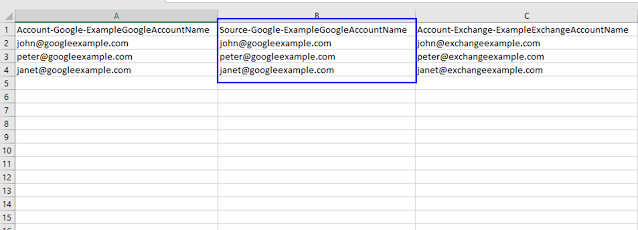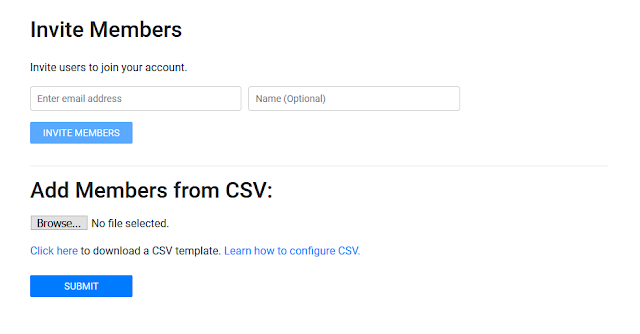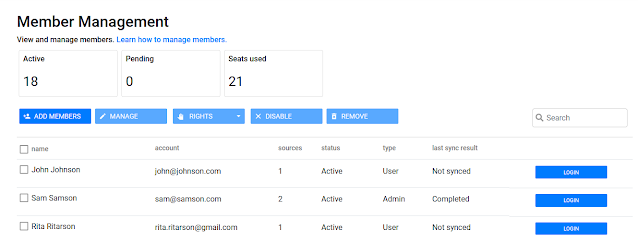
Everything You Need to Know About G Suite and Outlook Connection
G Suite is a nifty suite of tools you can use to improve the efficiency of your business. No doubt about it. However, G Suite is not compatible with Microsoft Outlook at the moment. That’s a problem, right? Wrong!
G Suite is a nifty suite of tools you can use to improve the efficiency of your business. No doubt about it. However, G Suite is not compatible with Microsoft Outlook at the moment. That’s a problem, right? Wrong!
Fortunately, there are a couple of tools and services that can be used to connect your business company’s email accounts (hosted on G Suite) and the Microsoft Outlook software that you might be using within your office or at home.
This article explains ways you can connect G Suite and Microsoft Outlook in a few simple steps.
Table of Contents:
Is G Suite compatible with Outlook?
Although technology has evolved tremendously over the past years, some professionals still struggle over the basic processes. Take syncing two different email platforms as an example. When it comes to syncing Google Workspace (previously G Suite) with Microsoft Outlook, there isn’t one easy way to do it.
Data transfer is usually straightforward when you stay within one ecosystem. Users can easily sync Microsoft Outlook with Office 365, or Google Calendar with other Google Apps. But if you want to sync between Google and Microsoft, the options get limited.
Limited, however, does not mean impossible. Given the right tools, users are able to connect G Suite with Outlook and use them at the same time.
Before doing so, you will have to decide on the best way to approach it, considering the requirements and limitations of each solution.
Here are the most popular ways to connect G Suite with Microsoft Outlook:
- Sync manually using POP and IMAP.
- Use G Suite Sync for Microsoft Outlook.
- Try a third-party tool to automate the process.
Next, we’ll explain the differences between these options.
Connecting data manually
You can connect G Suite and Outlook yourself. For syncing the data manually, you will have to use the POP (Post Office Protocol) or the newer IMAP (Internet Message Access Protocol).
POP is an email protocol used to download mails from a server and store it on a local device.
IMAP is used to view emails from the remote server as if they were stored in a local folder, without downloading them to a device.
Essentially, the main difference between the two protocols is that POP downloads emails from the server, while IMAP leaves them on the server and just caches (temporarily stores) emails locally. In other words, IMAP is a form of cloud storage.
Although using email protocols will definitely help you in the process, the method has its own limitations:
- With POP and IMAP, you can only move mailboxes. Contacts, calendars, or tasks will not be transferred.
- To move contacts and calendars from G Suite to Microsoft Outlook, you will have to export the files from a Google account and import them to Outlook manually.
- With POP and IMAP, you can only transfer up to 500,000 items from a mailbox.
- The largest email that you can transfer is 35 MB.
Needless to say, connecting G Suite and Outlook data using POP, IMAP, or other ‘under the hood’ methods can be slippery and may require some technical know-how to implement.
For this reason, data administrators usually consider synchronization tools to get the job done. We will talk about these tools next.
What is G Suite Sync for Microsoft Outlook?
G Suite Sync for Microsoft Outlook (or GSSMO) is a tool supplied by Google that lets you use G Suite and Outlook together. This plug-in lets you synchronize emails, calendar events, contacts, notes, and tasks between a Google account and Microsoft Outlook.
With this tool, it becomes possible to work with Outlook alongside G Suite. It’s easy to perform an Outlook to G Suite sync once you meet the necessary requirements:
- A G Suite or G Suite for Education (any tier) account is needed.
- GSSMO is reliant on MAPI (Messaging Application Program Interface) which is not supported by Mac OS. As of this, GSSMO only works on Windows:
- Windows 10 (32 and 64-bit)
- Windows 8 (32 and 64-bit)
- Windows 7 (32 and 64-bit)
- Windows Vista SP1 (32 bit and 64-bit)
- GSSMO works with a range of Outlook versions, including:
- Outlook 2019, 2016, and 2013 (32 and 64-bit)
- Outlook 2010 (32 and 64-bit)
- Microsoft Outlook 2007 with Office SP2
- Microsoft Outlook 2007 with Office SP1
- Microsoft Outlook 2003 with Office SP3
After you meet these requirements, however, GSSMO will still not work for everyone. Even if you have a paid G Suite account, GSSMO can only be enabled by a G Suite Admin. If you’re not an admin, you’ll need to ask the G Suite Admin in your organization to set it up for you.
Fortunately, there are easier solutions to sync data from Google Workspace (formerly G Suite) to Microsoft Outlook. We recommend using SyncGene to avoid limitations and make data transfer straightforward.
Sync G Suite with Outlook 365 with SyncGene Enterprise
SyncGene Enterprise can help you connect G Suite with Outlook 365 in minutes, saving you all the hassle of a complex data transfer scenario. SyncGene Enterprise holds a broad collection of tools and solutions that will save you lots of time and effort.
Whether your business is acquiring another company or merging different mailing systems, connecting data from Google Workspace/G Suite to Outlook 365 will always be secure and fast with SyncGene Enterprise.
How to sync G Suite with Outlook automatically
Follow the steps below to learn how to migrate Calendars and Contacts from G Suite to Outlook 365 with SyncGene Enterprise.
Step 1: Get started. Head to the SyncGene site. Or, if you are on the go, SyncGene is also on mobile, with fully-featured iOS and Android apps.
Click on Sign up to get a SyncGene account, or Log in, if you already have an account. Be sure to have a valid SyncGene Enterprise subscription.

Step 3: Set up member accounts and sources. Add company employees to an Enterprise account by uploading a pre-filled CSV file. The file can include the following data:
- Login (A). This column will define how users will log in to their accounts.

- Sources (B, C). Here you will set up accounts for synchronization. Choose at least two sources.

- Filter (D, optional). Choose which folder/group you want to synchronize between the sources. Choose default calendar and contacts folders, or all folders from all sources.

- Directions (E, F, optional). Set one-way or two-way synchronization.
See the in-depth step-by-step manual on how to prepare the CSV file and define values for each setting.
Step 4: Add users. Once you have the CSV file prepared, press on Members, then Add member to upload it.

You can also invite users to your Enterprise plan member-by-member. To do so, enter an email address into the field.

Step 5: Manage members. Via the Enterprise panel you can:
- Manage members. Change users’ names, set specific notification settings.
- Assign rights. Promote selected user to an admin or demote admin to a user. Admins can add/remove users, manage payments.
- Disable/Enable accounts. Accounts can be disabled or enabled. If an account is disabled, the user will be unable to log in and synchronize.
- Remove members. Remove the selected user from the enterprise account.

Step 6: Connect Google Workspace/G Suite with Outlook 365. Once your preferences are set up, you are ready to go! Calendars and contacts will now be moved from G Suite to Office 365 for each added account. Fantastic job!
Summing up
here you go, that is everything you need to know about Google Workspace/G Suite and Outlook 365 connection. Now you know that the right tools make this process lemon squeezy!
Do not wait and check out SyncGene Enterprise now! And, if you have any questions, send us an email, give us a call, or start a Live Chat.
Read more:








%20white.svg)
.svg)